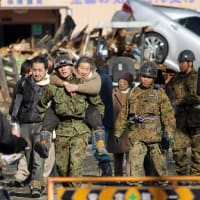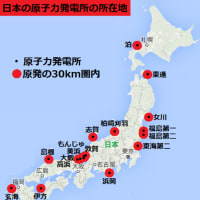The lancet
COVID-19のクラスターの接続:疫学的および血清学的調査
Introduction
As of April 15, 2020, more than 1·9 million cases of coronavirus disease 2019 (COVID-19), and more than 120 000 deaths from the disease, have been recorded worldwide.1
Many initial cases reported outside of China were imported or were linked to travellers from China.2, 3
However, as community transmission has become widespread, the source of cases of COVID-19 in several countries has not been established.
2020年4月15日の時点で、2019年に1,900万件を超えるコロナウイルス病(COVID-19)が発生し、世界中で120,000人を超える死者が記録されています。 中国国外で報告された最初の症例の多くは輸入されたか、中国からの旅行者にリンクされていました。 しかし、地域社会への感染が広まったため、いくつかの国でCOVID-19の症例の出所は確立されていません。
In Singapore, a globally connected city-state in southeast Asia, health officials have attempted to contain the spread of COVID-19 through intensive epidemiological investigations coupled with isolation of cases and quarantine of close contacts. However, establishing the source of infection to ascertain the possible extent of spread can be difficult, because scant epidemiological data might be available. Even when possible nodes of transmission are retrospectively identified through epidemiological investigations, nucleic acid-based tests would not be diagnostically useful if these infected individuals have recovered and no longer shed the virus. Hence, serological tests are needed to identify convalescent cases and aid investigations and containment efforts.
We present findings of investigations from Jan 29 to Feb 24, 2020, that linked two people with COVID-19 from Wuhan, China, to three clusters of COVID-19 cases in Singapore. Serological testing had a crucial role in establishing a link between clusters, showing its use in identifying convalescent COVID-19 cases and supporting epidemiological investigations.
東南アジアの世界的に接続された都市国家であるシンガポールでは、保健当局は、徹底的な疫学調査と症例の隔離および密接な接触者の隔離により、COVID-19の蔓延を封じ込めようとしました。ただし、わずかな疫学データが利用できる場合があるため、感染の原因を特定して感染拡大の可能性を確認することは困難な場合があります。伝染の可能性のあるノードが疫学的調査を通じて遡及的に特定されたとしても、これらの感染した個人が回復してもはやウイルスを流さない場合、核酸ベースのテストは診断上有用ではありません。したがって、回復期の症例を特定し、調査と封じ込めの取り組みを支援するには、血清学的検査が必要です。 中国の武漢からのCOVID-19の2人と、シンガポールのCOVID-19症例の3つのクラスターとを結び付けた、2020年1月29日から2月24日までの調査結果を提示します。血清学的検査は、クラスター間のリンクを確立する上で重要な役割を果たし、回復期のCOVID-19症例の特定および疫学的調査のサポートにおけるその使用を示しました。
Methods
Surveillance methods and identification of cases
In Singapore, several surveillance methods are used to identify people with COVID-19. On Jan 2, 2020, a suspect case-definition of COVID-19 was circulated to all doctors in Singapore;4 doctors are legally required to notify the Ministry of Health of cases of COVID-19.5 From Jan 31, 2020, Singapore began testing all patients with pneumonia in hospital for severe acute respiratory syndrome coronavirus 2 (SARS-CoV-2); this testing was later expanded to include people with pneumonia in primary care. The diagnosis of COVID-19 is confirmed either by a respiratory sample testing positive for SARS-CoV-2 using a laboratory-based RT-PCR6 or by a serum sample testing positive for SARS-CoV-2 on serological analysis.7
方法
監視方法と症例の特定 シンガポールでは、COVID-19の人を特定するためにいくつかの監視方法が使用されています。 2020年1月2日、COVID-19の疑いのある症例定義がシンガポールのすべての医師に回覧されました; 4人の医師が法務省にCOVID-19.5の症例を通知するよう法的に義務付けられています2020年1月31日から、シンガポールはすべての検査を開始しました重症急性呼吸器症候群コロナウイルス2(SARS-CoV-2)による入院中の肺炎患者;このテストは後に、肺炎の患者をプライマリーケアに含めるように拡張されました。 COVID-19の診断は、検査室ベースのRT-PCR6を使用したSARS-CoV-2陽性の呼吸器サンプル検査、または血清学的分析でのSARS-CoV-2陽性の血清サンプル検査のいずれかによって確認されます。
Research in contextEvidence before this study
We searched PubMed on March 3, 2020, for reports on serological testing in individuals with coronavirus disease 2019 (COVID-19). We used the keywords (“COVID-19”, OR “2019-nCoV”, OR “SARS-CoV-2”) AND (“serology” OR “serologic testing”). Our search did not identify any reports of the epidemiological application of serological tests in COVID-19. In one report, researchers described serological characteristics of COVID-19, and in other publications, researchers have commented on the potential importance of COVID-19 serological tests. In another study, epidemiological investigations were reported of the epidemic in Singapore, but serological methods had not been used.
We searched PubMed on March 3, 2020, for reports on serological testing in individuals with coronavirus disease 2019 (COVID-19). We used the keywords (“COVID-19”, OR “2019-nCoV”, OR “SARS-CoV-2”) AND (“serology” OR “serologic testing”). Our search did not identify any reports of the epidemiological application of serological tests in COVID-19. In one report, researchers described serological characteristics of COVID-19, and in other publications, researchers have commented on the potential importance of COVID-19 serological tests. In another study, epidemiological investigations were reported of the epidemic in Singapore, but serological methods had not been used.
状況に応じた研究 この研究の前の証拠 2020年3月3日にPubMedを検索し、2019年コロナウイルス病(COVID-19)の個人の血清学的検査に関する報告を求めました。キーワード(「COVID-19」、または「2019-nCoV」、または「SARS-CoV-2」)および(「血清学」または「血清学的検査」)を使用しました。私たちの調査では、COVID-19における血清学的検査の疫学的応用に関する報告は確認されませんでした。 1つのレポートでは、研究者はCOVID-19の血清学的特性を説明し、他の出版物では、COVID-19血清学的検査の潜在的な重要性についてコメントしています。別の研究では、シンガポールでの流行に関する疫学的調査が報告されたが、血清学的方法は使用されていなかった。
























